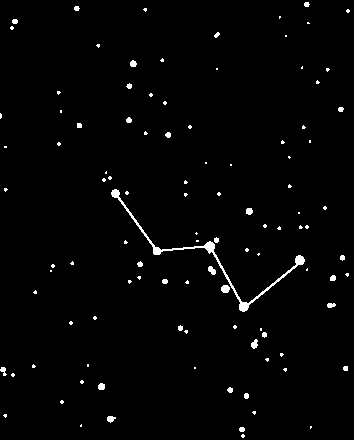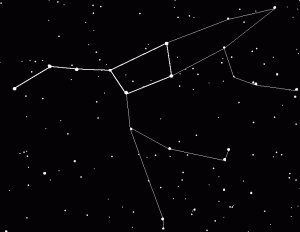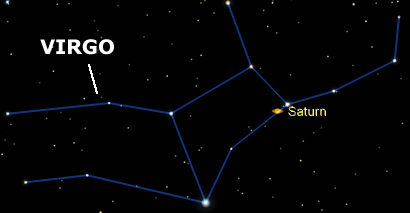Posts Tagged ‘earth’
Perseids 2013
Last night I spent about 40 minutes outside meteor spotting. Luckily it was the first night in ages that there was a mostly clear sky, apart from the occasional wispy clouds that passed overhead. It was good timing as last night was the peak of the Perseid Meteor shower of 2013 although you can still see meteors up until the 24th August when the Earth passes out of the meteor hot spot.
It took a while to spot anything but in the end I managed to see 8 meteors, 4 satellites, the International Space Station (ISS – which was a nice surprise!) and a strange looking triangle shaped Plane with weird flashing lights (aliens? 😉 ). The most interesting thing of all was that I also saw a bright flash in the sky and then it gradually faded away. I think it must have been a larger meteor hitting the atmosphere and exploding or something but it seemed to be heading in the wrong direction for the meteor shower, which made it more strange. It would be interesting to know if anyone else saw this last night? It must have been about 23:20 when I saw this. Please leave a comment on this post if you did see that last night as well!
As mentioned above, if you missed the meteor show last night, then you can still see them up until near the end of the month. If you can find the constellations of Cassiopeia and The Plough (Ursa Major), then kind of look between and above them and this is the general area where the meteors shoot across the sky. There were some really good ones and a couple of years ago I saw the best meteor I have ever seen towards the end of August, so it is definitely possible to see them for a few weeks yet!
Lyrid Meteor Shower 2013
Unfortunately, this year the viewing of the Lyrid meteor shower will be hindered by a very bright and almost full Moon (if you get clear skies that is)! It’s a real shame as the Lyrid meteor shower is one of the best ones of the year. Having said that, if you are out on its peak, which is today (the 22nd April), you may still spot the brighter meteors, but obviously these will be far fewer than if it was a clear sky as you would see the fainter ones as well.
My wife and I went out last Friday evening (19th) to try and have a look as it was a very clear sky and the Moon wasn’t quite as bright as it would be tonight, and I managed to see one very faint meteor (I think) in the distance, but that was about it. We gave up on the meteors after about half an hour as it was still just too bright and the direction they come in is close to the horizon for us where a lot of trees are situated. If it clears up again tonight, I will go out and try and view them again (with my fingers crossed!).
One good thing that came out of viewing last Friday, was that I saw 2 satellites and also the International Space Station fly over (the first time for both this year due to the constant bad weather we have had!). I always enjoy viewing the ISS, even though you don’t really see much, as it still amazes me that that is a space station which we can see shining bright from Earth. I would be happy to view it every night if I could! 😉
Anyway, happy meteor spotting tonight and leave a comment on here or my twitter account (@strethewey) if you do manage to see anything!
Asteroid 2012 DA14
On February 15th 2013, an Asteroid will be passing by Earth closer to us than the Moon is to our planet and closer to us than some satellites that we have orbiting us. There was a time when some scientists thought that the Asteroid would hit Earth, but they now believe it will miss us (thank goodness!), and will travel pass us at about 17,200 miles away. This is still pretty close and may possibly allow us, if it is a clear day and night, to view the Asteroid at some point. Those of us with access to good binoculars and telescopes should have a good view if the skies are clear.
To put the distance that Asteroid 2012 DA14 will swing by us in context, the Moon is 240,000 miles away and geosynchronous satellites are about 26,000 miles away. So the Asteroid will travel approx 9,000 miles closer to us than these satellites. The Asteroid itself is a small one compared to most others and is about 45m across with a mass of about 130,000 metric tons, but would still have caused some damage if it actually hit us!
NASA have released a statement regarding the Asteroid with a few more tidbits of information,
‘On [February 15, 2013], the asteroid will travel rapidly from the southern evening sky into the northern morning sky with its closest Earth approach occurring about 19:26 UTC when it will achieve a magnitude of less than seven, which is somewhat fainter than naked eye visibility. About 4 minutes after its Earth close approach, there is a good chance it will pass into the Earth’s shadow for about 18 minutes or so before reappearing from the eclipse. When traveling rapidly into the northern morning sky, 2012 DA14 will quickly fade in brightness.‘
Lyrid Meteor Shower
This year the annual Lyrid Meteor Shower should be a great spectacle as the Moon will not be lighting up the sky at all. As long as you are out in the country and have the luck of a clear sky, there should be a perfect view of the meteors. Even in a lighter sky, it should be a good sight.
The height of the shower falls on the night of the 21st April with the average number of meteors spotted per hour being at about 10-20, but it has been known to reach up to 100 meteors per hour! On the nights around the peak night, you should still be able to see the occasional meteor. I had a look last night but unfortunately didn’t see any, mainly because the area of the sky where they seem to originate from (The constellation Lyra near the bright star called ‘Vega’.) was too low on the horizon and was hidden by trees.
The Lyrids are thought to be sand grain sized debris from a passing comet. When they hit the Earth’s atmosphere, they burn up, causing the light streaks in the Sky. In the past, fireballs have been seen hurtling across the sky during this meteor shower. They are thought to originate from comet Thatcher that has an orbit of 416 years with its path staying practically the same each time is passes through. This means the debris is always in the path of the Earth which is why it is an annual event.
So fingers crossed everyone gets to see a good few meteors! 😉
Saturn in the Virgo Constellation
For the past few weeks Saturn has been in a great position in the sky to view through either binoculars or telescopes. It is currently in the Eastern Sky within the Constellation of Virgo.
I had been trying for a long time to get a good view of the planet via my telescope, but had been scuppered a lot of the time due to bad weather and haze in the sky in the evenings. The sky has also been brighter later in the evenings now, so I have had to go out later and later each night to view it. When you have an energetic 2 year old, this is a difficult task as by that time of night, you are shattered!! 😉
Eventually, after many attempts, I managed to get a great view of the planet and could very clearly make out the rings around it. It was an amazing site and I was very pleased that I managed to get my telescope to focus in correctly.
Some of you may be interested to know that the rings of Saturn are so big that they would nearly reach all the way to the Moon from the Earth, and the planet is so dense that it would float on an ocean. Amazing. Saturn also has 60 moons with the most famous being Titan, but unfortunately I was unable to spot any of these through the telescope, though I will try again when the weather is better!
If you have any thoughts or statistics about Saturn, please leave them as comments to this post as I would find any other information very interesting indeed! Thanks!



